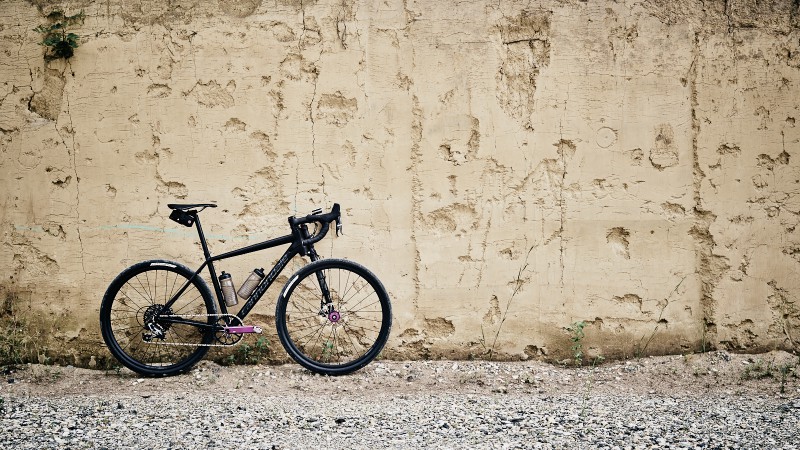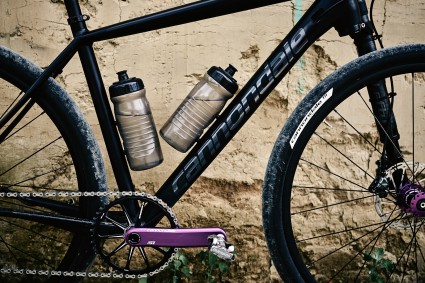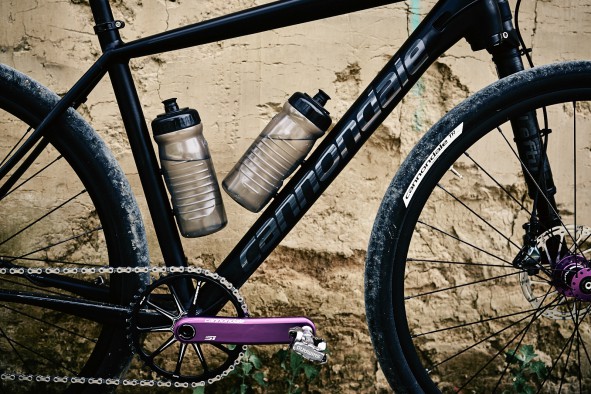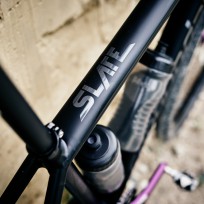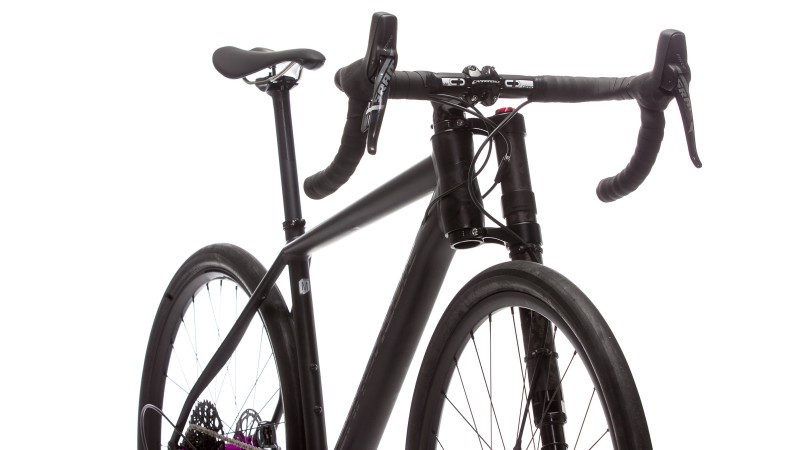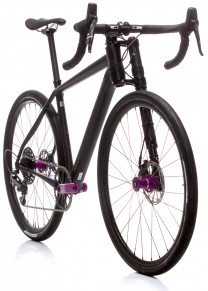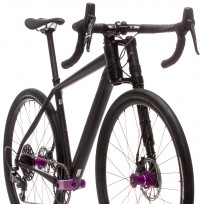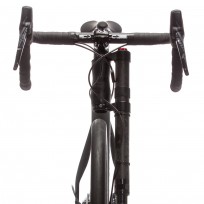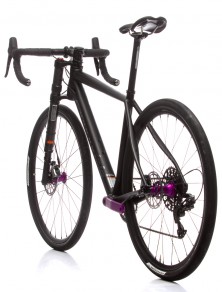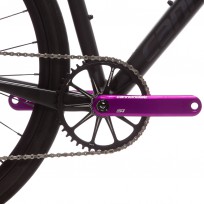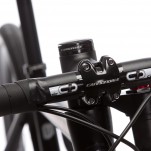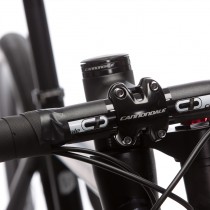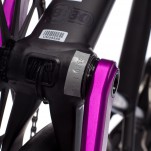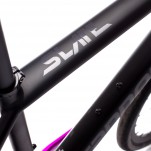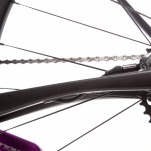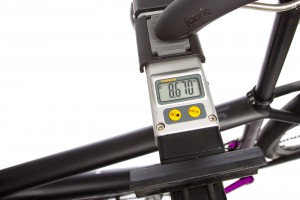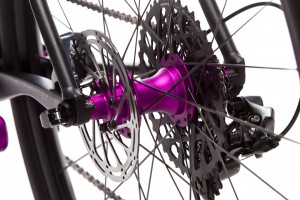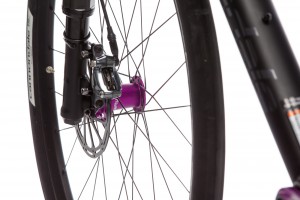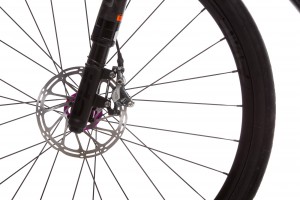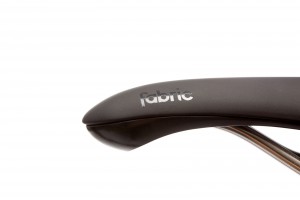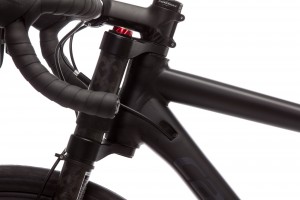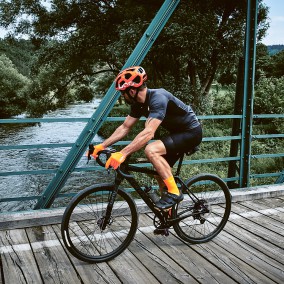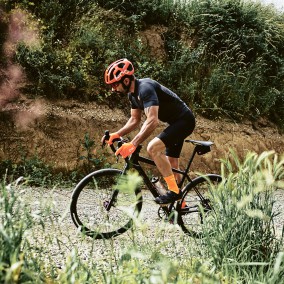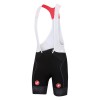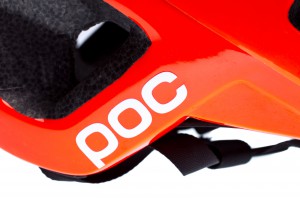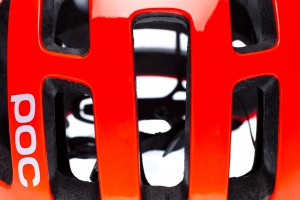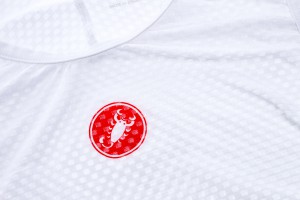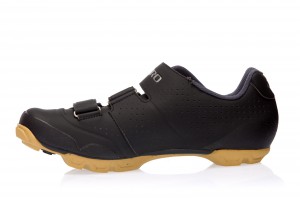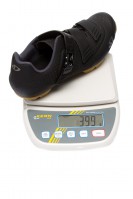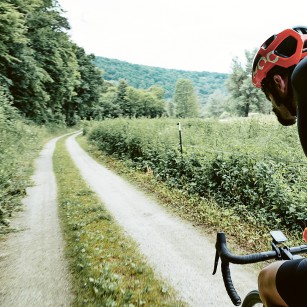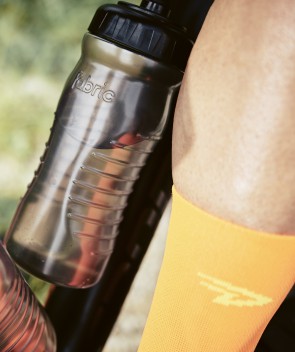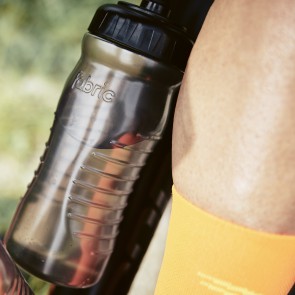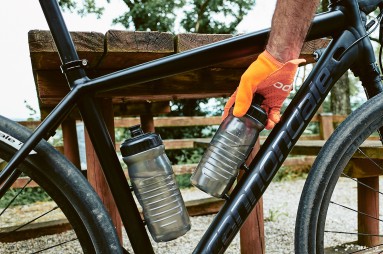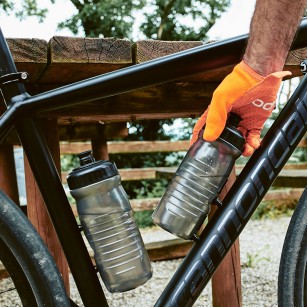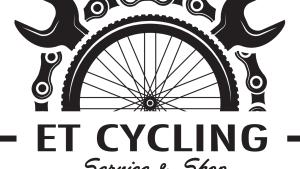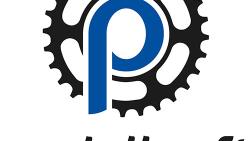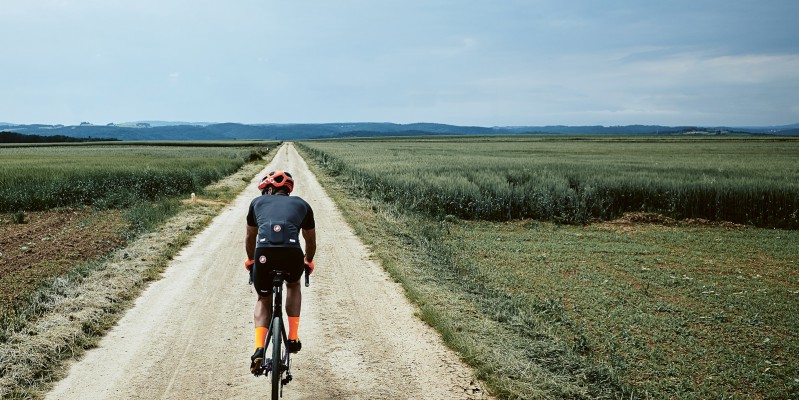
Cannondale Slate Force CX1
26.09.16 12:36 14.2442016-09-26T12:36:00+02:00Text: NoPainPhotos: Forstus (Outdoor), Erwin Haiden (Studio)Long-term test of the revolutionary new road weapon, a hybrid of a road racing bike, hardtail and crosser, with fat 650b tyres and a Lefty suspension fork. + New Road Style by Castelli, POC & Giro26.09.16 12:36 14.3342016-09-26T12:36:00+02:00Cannondale Slate Force CX1
26.09.16 12:36 14.3342016-09-26T12:36:00+02:00 NoPain Forstus (Outdoor), Erwin Haiden (Studio)Long-term test of the revolutionary new road weapon, a hybrid of a road racing bike, hardtail and crosser, with fat 650b tyres and a Lefty suspension fork. + New Road Style by Castelli, POC & Giro26.09.16 12:36 14.3342016-09-26T12:36:00+02:00Even though we might not have already anticipated this last season, there is no doubt left now: Gravel bikes are the 29ers among the 26-inch models, the plus amid the 650bs, the fatbike, the lace and the new matt black. Gravel bikes are currently all the rage and every manufacturer strived to thrash out at least one Grinder novelty for Euro Bike. If it was only to give the Crosser in the existing portfolio a handle that is bent outwards, a flatter steering angle or a new logo. The main thing was that "Gravel" in the name somewhere.
Cannondale can look at this relatively casually, because they have not only just given their SuperX BallisTec Carbon Disc Crosser a modern all-round geometry, but they already own a revolutionary Gravel weapon with the Slate introduced last year, a hybrid of racing bike, hardtail and Crosser, for which the Americans have defined the subcategory "New Road".
The Slate is in seventh heaven on nearly all surfaces, never mind if paved or unpaved, and even though it cannot really compete with real specialists in the disciplines "road", "terrain" or "Cyclocross", there is still a fine line at which it appears to be unbeatable, depending on riding ability and willingness to take risks. High-speed passages on asphalt, almost regardless of the road conditions, as well as in dry and solid off-road terrain are thus part of its domain.
"Cannondale created this category-crosser for one rather straightforward reason: we wanted to ride a bike just like this."
Murray Washburn, Global Product Marketing Director CannondaleEye-Catcher: fat tires and a Lefty
Cannondale's "New Road Bike" runs on oversized 650bx42c tyres by Panaracer. The idea behind this: the 42 mm wide tyres reach, in combination with the smaller 650b rims, almost the same wheel circumference of a classic 23 mm wide road tyre in 700x23c (note: we have measured it, and rather found it to be 22 mm, but so be it). The racing bike feeling should thus be maintained on and off road despite all advantages of the super wide tyre, in terms of grip, damping and durability.
The Lefty fork "Oliver" was also developed for both worlds, on and off road. It weighs about 1,195 grams and has a forerun of 45 mm and a 30 mm suspension travel. It has a PBR pressure switch for overload damping (lockout) with external rebound adjustment and SoloAir air suspension. To ensure an optimal adaptation to the driver's size, it is available in four different fork bridge spacing’s (100.2 /112.9 /125.6/137.6 mm). Thanks to this attention to detail, the Lefty integration with only 10 mm above the head tube has its full impact and the entire stack is at a mere 9 mm higher than the Supersix-Evo in the frame size medium.
"This bike is the Swiss-Army knife of road bikes."
Tim Johnson, Cannondale AmbassadorThe Smart Formed frame consists of 6069 aluminium, which is a very resistant and rigid material that Cannondale has originally developed for the CAAD10. In large, it weighs just 1,200 grams, has internal features and is Di2-compatible. The frame design was borrowed from the current Supersix Evo and CAAD12 racers, but is oversized in some corners and ends, for example, at the massive head tube, in order to master the disproportionately higher off-road forces.
The frame gains even more lateral stiffness through the 142x12 quick release axles at the rear, and the massive, asymmetric BB30A bottom bracket, which also creates sufficient space for the wide tyres. The geometry of the frame is geared towards racing, that is, long reach and large saddle camber, with short chain stays of 405 mm for particularly high agility.
In addition to the voluminous tyres and the suspension fork, the 27.2 mm thin saddle post, a well-absorbing Fabric saddle and strong profiles on the chain and seat stays (Save Plus Micro suspension) additionally ensure the excellent grip and a comfortable ride. In contrast to the fork, the frame has a rear flat mount for Srams hydraulic disc brakes, eyelets at the bottom and seat tube for two bottle holders, as well as at the dropouts and seat stays for attaching fenders.
Cannondale Slate Force CX1
Slate Force CX1
| Frame | Slate, SmartFormed 6069 Alloy, Di2 ready, Save Plus, BB30a | Fork | Cannondale Lefty Oliver Carbon w/ PBR, 30 mm Travel, 45 mm off-set, IS-2000 (offen) |
| Sizes | SM/MD/LG/XL | Bottom bracket | FSA BB30 Bearings |
| Headset | Tange Seiki Head Shock Integrated | Crank | Cannondale HollowGram Si, BB30a, w/ OPI SpideRing 44Z |
| Stem | Cannondale C1, 6061 Alloy, 1.5", 31.8, -5 deg. 100 mm | Cassette | Sram X1 XD Drive 10-42 |
| Handlebar | Cannondale C1 Ultralight, 7050 Alloy, Compact | Chain | Sram PC-1170, 11-speed |
| Bar tape | Cannondale Bar Tape w/Gel, 2.5 mm | Breaks | Sram Force CX1 Hydraulic Disc, 160/140 mm |
| Seatpost | Cannondale C1, Alloy, 27.2mm x 350 mm | Shifters | Sram Force CX1 Hydraulic Disc |
| Saddle | Fabric Scoop Radius Race, Ti Rails | Rear Derailleur | Sram Force 11s, mid |
| Rims | Slate Disc, 650b, 28H, welded | Hubs | Lefty 50 Road front, Formula 142x12 mm thru rear, 28h |
| Spokes | DT Swiss Aerolite | Tires | Cannondale Slate Folding TRS tubeless, 650x42c, by Panaracer |
| Weight | 8,67 kg | List price | € 3.999,- |
Photo gallery
Geometry
The New Road geometry of the Americans is a bit random, yet it fits absolutely. On one hand, the Reach is almost exactly the same as the Cannondale Supersix-Evo (385 versus 387 mm in M), the stack has a similar depth (560 versus 551 mm in M) and the fork forerun (45 mm), and the length of the chain stays (405 mm) are even absolutely equal. On the other hand, the flatter steering angle (71.5 ° versus 72.9 ° in M) generates a significantly longer wheelbase (996 versus 980 mm in M) and a larger trail (66 versus 58 mm) and ensures the proverbial "Drive like on tracks". The bottom bracket (273 versus 269 mm) positioned 4 mm higher creates more ground clearance, especially with a deflecting fork.
On road - the tyre pressure makes it
Although the Slate wants to combine the best of both worlds, in reality, as expected, some compromises have to be made. And this starts already with the tyre pressure, because the bandwidth is very high with the specified 40-75 psi (2.75 to a maximum of 5.2 bar). Tim Johnson, 6-time American champion in Cyclocross, advises (depending on the weight of the rider) 2.75 bar in the terrain, up to 4 bar on the road and 3 bar on changing surfaces.
I must confess that I only discovered this recommendation when typing the report, and largely travelled, on- and off-road, with the original butyl tubes with only 2.5 bar, thus without tubeless milk. At a live weight of 70 kilograms, I had no problems with defects, nor did the tyres slip away, or ride harshly due to the pressure being noticeably high.
I adjusted the negative suspension travel in accordance with the attached weight table per air pressure (145 psi at 70 kg), adjusted the rebound through gut feeling, and never touched them again. Well, "almost never", because a couple of times I already tried the lockout while riding. However, since the fork responded so sensitively at the beginning of its suspension travel of only 30 mm and shortly thereafter became extremely progressive, I left the stiff fork actually permanently open and could thereby also never notice any disturbing rocking movements.
Regardless of the current road conditions - dry, wet, tarred, paved or sandy - I always had a feeling of safety and a lot of fun on fast asphalt slopes and in the tightest bends. Weight distribution and centre of gravity were ideal, the transmission of braking forces exorbitant, and a pure super moto feeling.
However, all these benefits have a downside, as compared to a real racing bike, the wide and soft tyres felt slightly spongy on the road and naturally did not roll off so well. A significantly higher air pressure brought remedy, but the gained grip was lost again and the running performance of the tyres suffered strongly in the centre of the tread.
Moreover, the additional weight compared to a conventional racing bike had a negative impact on any acceleration on slopes and provided a more indirect ride feeling. In its defence it should be noted that the Slate darted of course more briskly on asphalt than a mountain bike or cyclocross bike.
I found the large bandwidth of the Sram Force CX1 to be great - as with 44/10 one can accelerate greatly on the road and with 44/42 one should be able to get up almost anywhere. On the other hand, as a racing cyclist, one must be able to live with large jumps between gears, because one cannot always find the best transmission for the optimum cadence.
Off road - the tyre pressure makes it
Slicks off paved roads, can this come to any good? It depends. In general, the wide tyres ensured an excellent grip, good traction and a high ride comfort on firm forest roads, dirt roads and dry forest passages. Of course, the tyres produced by Panaracer reach their limits slightly quicker with an air pressure that is too high, which is why a pressure (depending on the weight of the rider) of 3 bar or less is recommended for longer terrain tours.
In rougher terrain, the moment of truth came for the Lefty Oliver, provided one had not previously forgotten to deactivate the lockout. The suspension fork with its 30 millimetres absorbed finest irregularities, as well as the toughest shocks or potholes, was easy on the wrists and mediated a significant plus in safety.
In fast bends on natural soils of all types, the slicks without profile performed less well despite their herringbone profile and skidded repeatedly in the wet. End terrain was finally in the muddy morass, deep gravel on loose boulders and rough descents. For really rough terrain, tires with an aggressive profile are simply missing and you would be better off with a Crosser or hardtail - if you do not want to fight for your life at a snail’s pace.
"Everything is fine until it isn't."
Slicks apart from paved roadsThe Gravel tyres (see the model Panaracer Gravelking without Cannondale branding) functioned however really well in accordance with their intended purpose and do not show serious signs of wear even now after more than 2,000 kilometres. This is likely to have been due to the low air pressure and the relatively low asphalt content of about 40%, as other Slate owners have already complained on the Internet about worn tyres after about 1,500 kilometres. There also appears to be a good puncture protection (Puncture Protection Breaker) on board - at least I had, despite permanently falling below the specified minimum pressure, I rode maximally with 2.5 bar at the front and rear, no problems with punctures.
New Road Style
Target group: Who is (and who is not)?
It is difficult to assign a certain bike type to the Slate. It is certainly not a beginner’s bike, it is hardly suitable for long endurance missions because of its sporty seating position and also can’t hold a candle to real specialists in the categories “racing bike”, "mountain bike" or "Cyclocross".
However, if you are looking for an all-purpose weapon for the road and terrain, do not want to set any speed records on asphalt and do not want to get any KOM in technical cross-country sections, you are well advised with the Slate. It is an all-rounder for everyone, but no one in particular. No real racing bike, but a bike for real racers.
| IS | IS NOT | |
| Fun- and new road bike | √ | |
| Gravel bike | √ | |
| Allround bike | √ | |
| Winter bike | √ | |
| Beginner bike | √ | |
| Road bike | √ | |
| Gran fondo / endurance | √ | |
| Cyclocross | √ | |
| MTB hardtail | √ |
"No real racing bike, but a bike for real racers."
Bikeboard.at about the Slate Force CX1Currently three models of the Slate are available. With Shimano 105 at about € 2,999 - Ultegra at about € 3,499, - and finally the top model presented here, Force CX1 with 1x11 drive at € 3,999. All bikes are equipped with disc brakes and share the same frame, fork, wheels and tyres.
In the coming season, two more reasonable Apex versions will be added to the line-up - a lady's and a gent's model - with Sram Apex 1x11 gears, hydraulic disc brakes, and striking Cannondale Solo Rigid single arm fork. Cost 1,999 Euro.
Safety warning
In April 2016, all Slate owners received the following information (version shortened by editorial staff): "Thanks to the feedback of some Slate owners, we found that, when converting the Slate to tubeless, the fit accuracy of the tyres on the rims does not fulfil the high standards of performance, safety and compatibility strived for by us. This is a problem with the rim, not the tyre.
The use of the Slate with the serially installed tubes is absolutely safe, but in the interest of safety, all users using their Slate tubeless with the serial tyres should stop the use of the bicycle immediately. The Slate can temporarily be used again with the serial tyre equipment and standard tubes. Users wishing to ride their Slate tubeless in the future should consult a Cannondale dealer and sign up for a free replacement of the complete wheel set. "
Since mid-July, the original wheels can be exchanged for functioning tubeless sets with Mavic XM419 disc rims. People who can do without tubeless are better off not to exchange, as the Mavic rims have a 19 mm inner rim width, by more than 3 mm narrower, but significantly heavier than the OEM version.
Since July 2016, however, the new bikes from the factory are delivered with Mavic XM419 Disc rims, the total weight of the complete bikes will therefore increase slightly.
Conclusion
| Cannondale Slate Force CX1 | |
|---|---|
| Model year: | 2016 |
| Test duration: | > 2.000 km (60% offroad) |
| Price: | € 3.999,00 UVP |
| + | Avant-garde and innovative concept |
| + | High comfort looking for its equal |
| + | Do-it-all Fun-Bike |
| + | 1x11-transmission with high bandwidth |
| + onroad | Low pressure guarantees grip and fun with no end |
| + offroad | Low pressure ensures a long life of the tyres |
| - onroad | High pressure and long asphalt passages reduce the life of the tyres |
| - offroad | The grip quickly reaches its limit in wet conditions and with a deep underground |
| - | OEM wheels are not tubeless-compatible before July 2016 |
| - | Laborious adjustment of the saddle angle (front screw sticks) |
| BB judgement: | All-purpose weapon for road and terrain for individualists and free spirits. |
Although many manufacturers interpret the classic Gravel bike as a defused Cyclocross bike with moderate geometry, Cannondale looks into a completely different direction with the Slate.
Thus you sit quite stretched on the New Road Bike and with a clear camber, like on a real racing bike, while the long wheel base, the thick tyre equipment and the solid mini fork ensure an extremely quiet run, excellent grip and a hitherto unknown, comfortable ride.
The thin, widely drawn out solid seat post with Flex, a good damping saddle by Fabric and strong profiles on the chain and seat stays (Save Plus Micro suspension) contribute to this.
Especially in dry and solid off-road terrain as well as in high-speed slopes on asphalt - almost regardless of road conditions - the Slate is in its element. Despite the much-famed spring characteristics, the frame, fork and wheels are always stiff enough to ensure optimal thrust and withstand even the associated burdens of hardest braking manoeuvres. As the Srams hydraulic disc brake system Force CX1 works excellently and bites down in a well-dosed manner, but vigorously.
The question whether the Slate is preferable to a classic Gravel bike or cyclocross bike can unfortunately not be answered by the test. As the saying goes: The end justifies the means.





